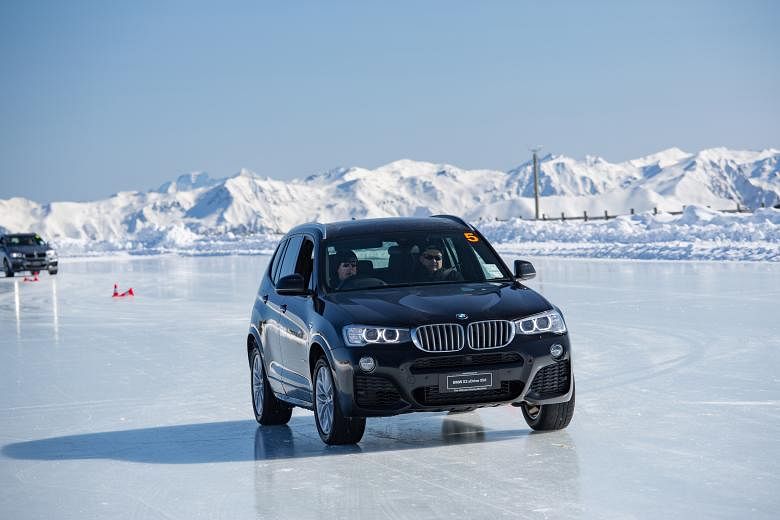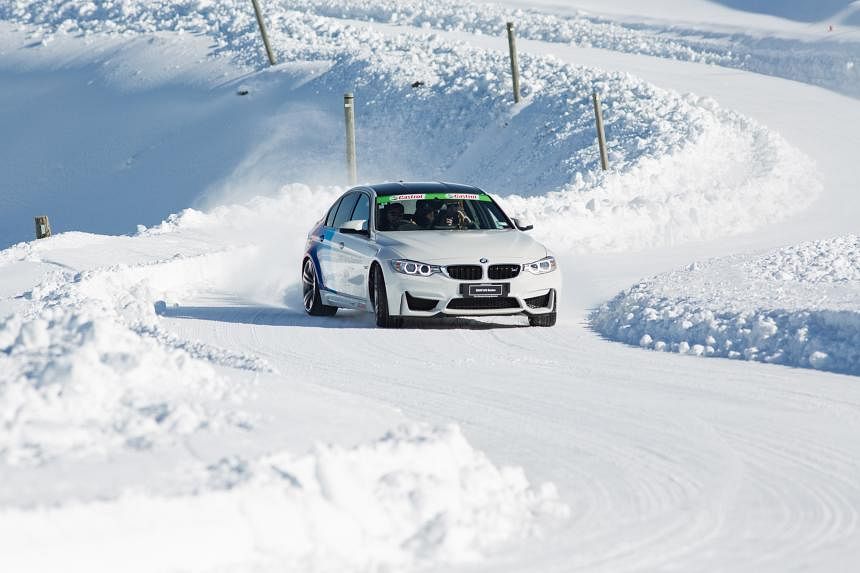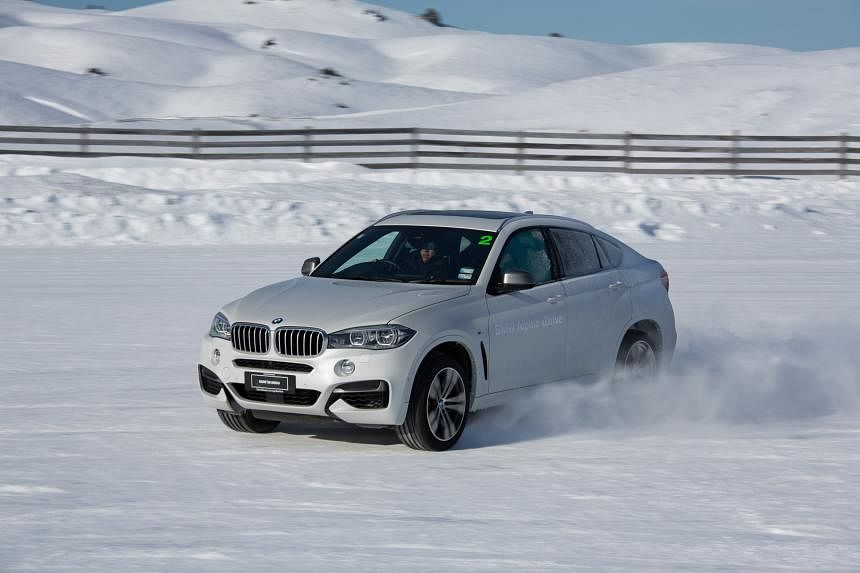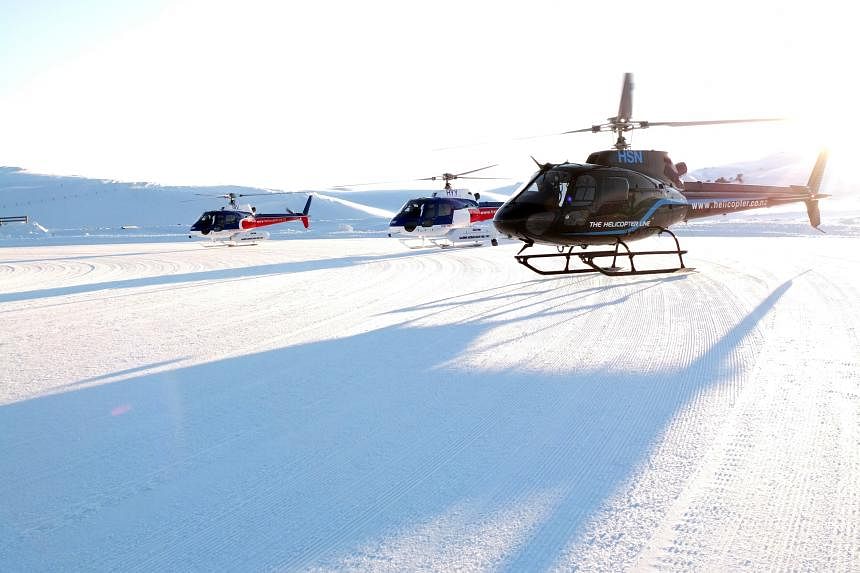New Zealand is a picture-perfect tourist destination with its aweinspiring landscapes. Less known to most is that it is also home to the Southern Hemisphere Proving Ground, a 400ha facility in a mountain range near Queenstown.
From June to August, this winter wonderland offers cold-weather testing when it is summer in the northern hemisphere.
It is about an hour's drive north-east of Queenstown. Or merely 10 minutes by helicopter, which will take you up to the 1,500m-high venue in style.
It is where BMW conducted its Alpine xDrive programme for a select group of motoring writers recently.
Before I was thrown into the deep end to "snow drift" in an X6, BMW instructors gave me a crash course on physics.
I was introduced to the Kamm's Circle, which shows how combined forces of acceleration, sway and yaw will determine the limit of tyre grip.
The circumference represents the friction limit, beyond which tyres lose grip and the car goes into a drift or slide. On a dry surface, the circle is bigger. On a wet surface, it is smaller. And on snow or ice, it is even smaller.
Drifting is a controlled loss of grip. And it is as much an art as it is a science.
In a typical rear-wheel-drive car, once the rear wheels lose traction and start to slide, you apply a short throttle burst, while counter-steering in the direction you want to go, to power-drift out of a bend.
In an all-wheel-drive xDrive BMW with predictive traction control, it is a whole new ball game.
During my first session, German rally expert Lars Mysliwiestz taught me how to do drift-circles. In an xDrive drift, steer into the circle, apply full throttle, then lift off the throttle briefly to induce a drift. Then, to keep the drift in a circular track, repeat the rhythm - long full throttle followed by short lift off, while keeping the steering pointing straight ahead with minimal steering correction.
Instinctively, I went into countersteering hyper-twirling mode once in a drift. Mysliwiestz corrected me several times, telling me over the walkie-talkie to "straighten the wheel and apply more power".
It was all rather counter-intuitive and unnerving. But with time, I was able to overcome my instincts.
Next, I did figure-eights - circular double drifts. They required the same manoeuvre as a circular drift, except at the intersection, lift off the throttle, steer in the opposite direction of the next circle and repeat the same drift manoeuvre.
The second segment was a "drag race duel" involving two cars pointing in opposite directions. The drivers had to do quick slaloms, a U-turn, and brake within a coned box.
This gave me the opportunity to practise what I learnt. But it was still tricky to the end, when I had to guess the car's stopping distance in the snow.
The third segment was the trickiest - driving on ice. I did slaloms on the glassy surface, which required a crawling pace.
I felt like a kid on skates for the first time.
Here, BMW's predictive xDrive system played an important part in regulating power to the wheels to maximise traction. Unlike in typical all-wheel-drive systems that redistribute power only when a slip occurs, the BMW system does so just before a slip happens.
But even then, I learnt that on ice, steering inputs have to be in small doses. Otherwise, the slaloms just get wider and wider.
With newly acquired winter driving skills, I was let loose to play rally driver for a couple of laps. But the real treat was a hot lap in an M3 piloted by rally champ and NZ chief driving instructor Mike Eady.
A hot lap around a regular race track is always thrilling, but one around a snow circuit is something else. The car reached 100kmh in some stretches and there were moments when I thought it would careen into the white expanse.
At the end of the programme, I gained new respect for Mother Nature, BMW's xDrive technology and winter tyres - not necessarily in that order.
• The writer is a contributor to Torque, a motoring monthly published by SPH Magazines.




